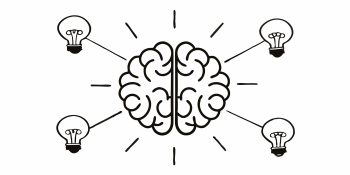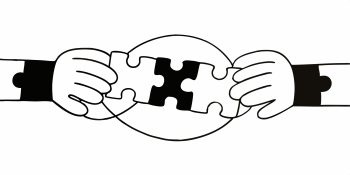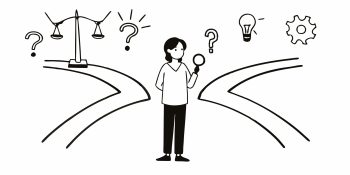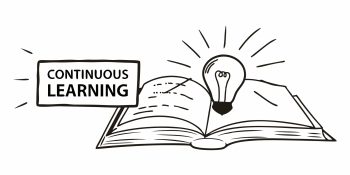
Question More, Action Knowledge.
Remember, at QMAK, we don’t just teach; we empower. We don’t just inform; we inspire. We don’t just question; we act. Become a Gold Member, and let’s unlock your child’s full potential, one question at a time.
![]() In our quest to understand the complex world around us, we often rely on mental models – simplified representations of reality that help us make sense of information and guide our decision-making.
In our quest to understand the complex world around us, we often rely on mental models – simplified representations of reality that help us make sense of information and guide our decision-making.
One such model, introduced by Alfred Korzybski in 1931, is the concept that “the map is not the territory.“
This powerful idea emphasizes that our representations of reality, whether they be physical maps, mental models, or abstract theories, are not the same as reality itself.
Understanding this concept is crucial for effective learning and personal growth. By recognizing the limitations of our maps and models, we can develop a more nuanced and flexible understanding of the world, enabling us to navigate challenges with greater wisdom and adaptability.
To grasp the significance of this mental model, let’s consider the characteristics and limitations of maps:
Reductions
Maps are simplifications of reality. They cannot capture every detail of the territory they represent. Just as a road map doesn’t show every tree or building, our mental models can’t encompass all the complexities of the real world.
Snapshots
Maps are static representations of a dynamic world. They capture a moment in time and may not reflect the current state of the territory. Similarly, our understanding of a subject can become outdated if we don’t continually update it based on new information and experiences.
Structural Differences
The structure of a map may not mirror the structure of the territory. A subway map, for example, prioritizes clarity over geographical accuracy. Our mental models, too, may have a different structure than the realities they represent.
When we mistake our maps for the territory itself, we risk falling into several traps:
To avoid these pitfalls, we must:
Helping children understand the map-territory distinction is crucial for developing their critical thinking and adaptability.
Here are some strategies:
Understanding the map-territory distinction can be a powerful tool for personal growth and decision-making:
1. Mental Flexibility: By recognizing that our beliefs and assumptions are maps, not the territory, we can be more open to updating them based on new experiences and information.

2. Effective Communication: When discussing complex issues, acknowledging the map-territory distinction can help us find common ground and understand differing perspectives.

3. Decision-Making: Before making significant decisions, we should ask ourselves: “Am I basing this on an accurate, up-to-date understanding of reality, or an outdated or oversimplified model?”

4. Continuous Learning: Embracing the map-territory distinction cultivates a mindset of continuous learning and growth. We become more open to new insights and less attached to fixed ideas.

Navigating the complexities of reality requires humility, flexibility, and a commitment to continuous learning. By understanding that the map is not the territory, we can develop these qualities, becoming more effective learners, communicators, and decision-makers.
Our “Question More, Action Knowledge” philosophy is rooted in this understanding. We encourage learners to continually refine their mental models through questioning, real-world experience, and openness to new perspectives. By doing so, they can chart a course through the complex territory of life with greater wisdom, resilience, and adaptability.
So let’s explore the territory together – not just with the maps we’ve inherited, but with a commitment to continuously updating and improving them based on the rich, ever-changing landscape of reality.
This interactive visualization demonstrates Alfred Korzybski's philosophical concept that models of reality (maps) are not the same as reality itself (territory). Different maps emphasize different aspects, but none capture reality fully.
Click any map to update it (maps become outdated while reality changes continuously)
Objective: To illustrate how maps are simplified representations of reality.
Objective: To demonstrate how information can change as it is passed from person to person.
Objective: To show how different perspectives can lead to different representations of the same thing.
Objective: To explore the process of creating and updating mental models based on new information.
Objective: To practice identifying and questioning assumptions in decision-making.
The Revenant offers a visceral exploration of how reality often defies our mental maps and planned strategies. Through Hugh Glass’s harrowing journey of survival, the film powerfully illustrates how our abstract understanding of a situation can differ dramatically from its raw, unfiltered reality.
As Glass navigates the brutal wilderness, students witness how his survival depends not on predetermined plans or maps, but on his ability to adapt to the territory’s harsh truths – from unpredictable weather patterns to dangerous wildlife encounters.
The stark contrast between what Glass might have expected from his frontier experience and what he actually faces demonstrates how our mental models can fall short when confronted with reality’s complexity.
The film’s immersive cinematography and unflinching portrayal of nature’s brutality make it an unforgettable lesson in why we must remain flexible and observant when our maps fail to match the territory we’re traversing.
Finding Nemo offers a delightful exploration of how “the map is not the territory” through Marlin’s journey across the ocean to rescue his son.
Through this overprotective clownfish’s adventures, students witness how his mental map of the ocean as an entirely dangerous place clashes with the complex reality he encounters.
The film demonstrates this concept as Marlin’s preconceptions are repeatedly challenged – from discovering that sharks can be friendly to learning that the seemingly ditzy Dory possesses crucial navigation skills.
As viewers follow Marlin and Dory’s quest across the ocean, they learn how our mental models (maps) of reality often fail to capture the true richness and nuance of the actual territory we’re traversing.
Through Marlin’s gradual recognition that his fear-based map of the world has limited both himself and Nemo, the film shows why understanding the difference between our mental maps and actual territory becomes crucial for navigating complex situations with wisdom rather than prejudice.
1. How does Marlin’s initial view of the ocean demonstrate the concept of an inaccurate “map”?
a) He sees it as a perfectly safe place
b) He views it as entirely dangerous, missing its complexity
c) He has no mental model of the ocean
d) His view perfectly matches reality
2. What does Marlin’s first encounter with the vegetarian sharks reveal about mental maps?
a) Mental models never need updating
b) His map was completely accurate
c) Reality can be more complex than our preconceptions
d) Sharks are always dangerous
3. How does Dory challenge Marlin’s “map” of what makes a capable navigator?
a) She confirms all his existing beliefs
b) She proves that careful planning is essential
c) She shows that different abilities can be valuable in unexpected ways
d) She demonstrates that memory is crucial
4. When Marlin meets the sea turtles, how does this experience update his “territory” understanding?
a) He learns that strangers can be trustworthy allies
b) He confirms that all strangers are dangerous
c) The turtles prove unhelpful
d) His original map was correct
5. What role does the Tank Gang play in showing the difference between map and territory?
a) They prove fish can’t survive outside their natural habitat
b) They show that seemingly confined spaces can contain unexpected wisdom
c) They demonstrate that plans always work
d) They confirm all of Marlin’s fears
6. How does Nemo’s experience at the dentist’s office challenge his father’s “map”?
a) It proves Marlin’s protectiveness was justified
b) It shows Nemo is completely helpless
c) It demonstrates Nemo’s capability for independence
d) It has no effect on Marlin’s views
7. What does Crush’s parenting style teach Marlin about his mental map of protection?
a) Confirms that strict control is best
b) Shows that there are different valid approaches to keeping children safe
c) Proves that no protection is needed
d) Demonstrates that all parents should be casual
8. How does the journey with Dory demonstrate the need to update our mental maps?
a) It shows maps never need changing
b) It proves first impressions are always right
c) It has no effect on Marlin’s worldview
d) It teaches Marlin to revise his assumptions based on experience
9. What does Bruce’s “Fish are friends, not food” philosophy reveal about mental maps?
a) That stereotypes can be oversimplified versions of reality
b) That all sharks are dangerous
c) That mental maps never change
d) That first impressions are always accurate
10. By the end of the film, what has Marlin learned about his mental map of the ocean?
a) It was perfect from the start
b) That reality is more nuanced than his fearful preconceptions
c) That the ocean is completely safe
d) That his initial fears were all justified
1. b
2. c
3. c
4. a
5. b
6. c
7. b
8. d
9. a
10. b
(Verse 1)
We navigate this world, with maps in hand
Mental models, to help us understand
But a map is not the land, it’s just a guide
Reality’s complexities, it cannot hide
(Chorus)
Beyond the map, there’s a world to explore
Beyond the map, there’s always something more
Question the map, update and refine
The territory’s truth, we must seek and find
(Verse 2)
Reductions and snapshots, the map’s limitations
Structural differences, and interpretations
Dogmatism, ignoring feedback, oversimplification
Pitfalls to avoid, in our mental navigation
Treat reality as the ultimate update, consider the cartographer’s view
Map-territory confusion, a trap we must eschew
(Bridge)
Teach the children, this crucial distinction
Multiple perspectives, and continuous updating
In personal growth, and decision-making too
The map-territory concept, a tool to break through
(Chorus)
Beyond the map, there’s a world to explore
Beyond the map, there’s always something more
Question the map, update and refine
The territory’s truth, we must seek and find
(Verse 3)
Mental flexibility, effective communication
Continuous learning, and wise navigation
Humility and openness, the keys to growth
The map-territory distinction, a guiding oath
(Outro)
So let’s explore the territory, with maps in hand
But remember, they’re just tools, to help us understand
The landscape of reality, ever-changing and vast
Beyond the map, we must be willing to ask
Question more, and action knowledge too
The map is not the territory, a truth to construe

Remember, at QMAK, we don’t just teach; we empower. We don’t just inform; we inspire. We don’t just question; we act. Become a Gold Member, and let’s unlock your child’s full potential, one question at a time.